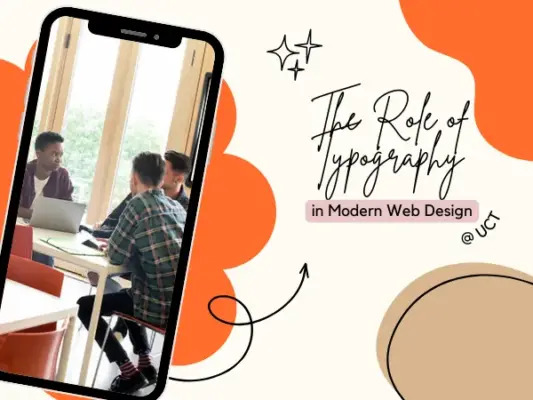
Introduction
Typography is more than just the art of arranging type—it’s a critical element of modern web design that significantly impacts how users perceive and interact with a website. As the digital landscape continues to evolve, the role of typography in web design has become increasingly important. From readability and accessibility to brand identity and user experience (UX), typography influences various aspects of a website. In this blog, we’ll explore the role of typography in modern web design and offer tips for using it effectively to enhance your site.
The Importance of Typography in Web Design
Typography plays a vital role in web design by shaping the way content is presented and consumed. It helps convey the tone and personality of a brand, guides users through the content, and creates a visual hierarchy that makes information easy to understand. Here are some of the key reasons why typography is crucial in web design:
1. Enhances Readability and Accessibility
The primary function of typography is to make text readable. Good typography ensures that content is easy to read and accessible to all users, including those with visual impairments. Factors like font size, line spacing, and contrast between text and background are essential for readability. Ensuring that your typography choices accommodate various screen sizes and devices is also crucial in today’s mobile-first world.
2. Establishes Visual Hierarchy
Typography helps create a clear visual hierarchy on a webpage, guiding users through the content in a logical order. By using different font sizes, weights, and styles, designers can emphasize important information and create a structured flow that enhances the user experience. For example, headings and subheadings should be distinct from body text, helping users easily navigate through sections of content.
3. Conveys Brand Identity
The typefaces you choose are integral to your brand’s identity. Typography can evoke emotions, set the tone, and reinforce your brand’s message. Whether your brand is modern and sleek, traditional and trustworthy, or playful and creative, the right typography can communicate these attributes effectively. Consistent use of typography across your website and other marketing materials helps build brand recognition and trust.
4. Supports User Experience
Typography is a key component of UX design. It affects how users interact with your content and how easily they can find the information they need. Poor typography choices, such as using overly decorative fonts or not considering spacing and alignment, can frustrate users and lead to a negative experience. On the other hand, well-thought-out typography enhances usability and ensures that your content is engaging and easy to digest.
5. Reflects Modern Design Trends
Typography trends in web design are constantly evolving. Modern web design often embraces minimalism, and typography plays a central role in achieving a clean, uncluttered look. The use of large, bold fonts, creative combinations of serif and sans-serif typefaces, and the strategic use of whitespace are all hallmarks of contemporary design. Staying up-to-date with typography trends can help keep your website looking fresh and relevant.
Tips for Using Typography in Modern Web Design
1. Choose Readable Fonts
While it might be tempting to use elaborate fonts, readability should always be your top priority. Opt for fonts that are easy to read on all devices, and avoid using more than two or three different typefaces on a single page to maintain consistency and clarity.
2. Create Contrast
Use typography to create contrast and draw attention to key elements on the page. Pairing different font weights, sizes, and styles can help highlight important information and guide users through the content.
3. Pay Attention to Spacing
Proper spacing—both between letters (kerning) and lines (leading)—is crucial for readability. Ensure that there is enough space between lines of text and that the text is not too crowded, making it easier for users to read and process the content.
4. Align with Brand Identity
Choose typefaces that align with your brand’s personality. Whether you’re aiming for a modern, classic, or playful look, your typography should reflect and reinforce your brand’s identity. Consistent use of typography across all digital and print materials helps establish a cohesive brand image.
5. Test on Different Devices
With the variety of devices and screen sizes users have today, it’s essential to test your typography choices across different platforms. Make sure your text is legible and aesthetically pleasing whether viewed on a smartphone, tablet, or desktop.
6. Stay Updated with Trends
Keep an eye on current typography trends to ensure your website stays modern and engaging. Trends such as variable fonts, bold and expressive typefaces, and the use of animated text can add a contemporary feel to your design.
Conclusion
Typography is a powerful tool in modern web design that goes beyond just presenting text—it shapes the user experience, conveys brand identity, and creates a visual structure that guides users through your content. By understanding the role of typography and implementing best practices, you can enhance the readability, accessibility, and overall impact of your website. Remember, good typography doesn’t just support the design; it elevates it.